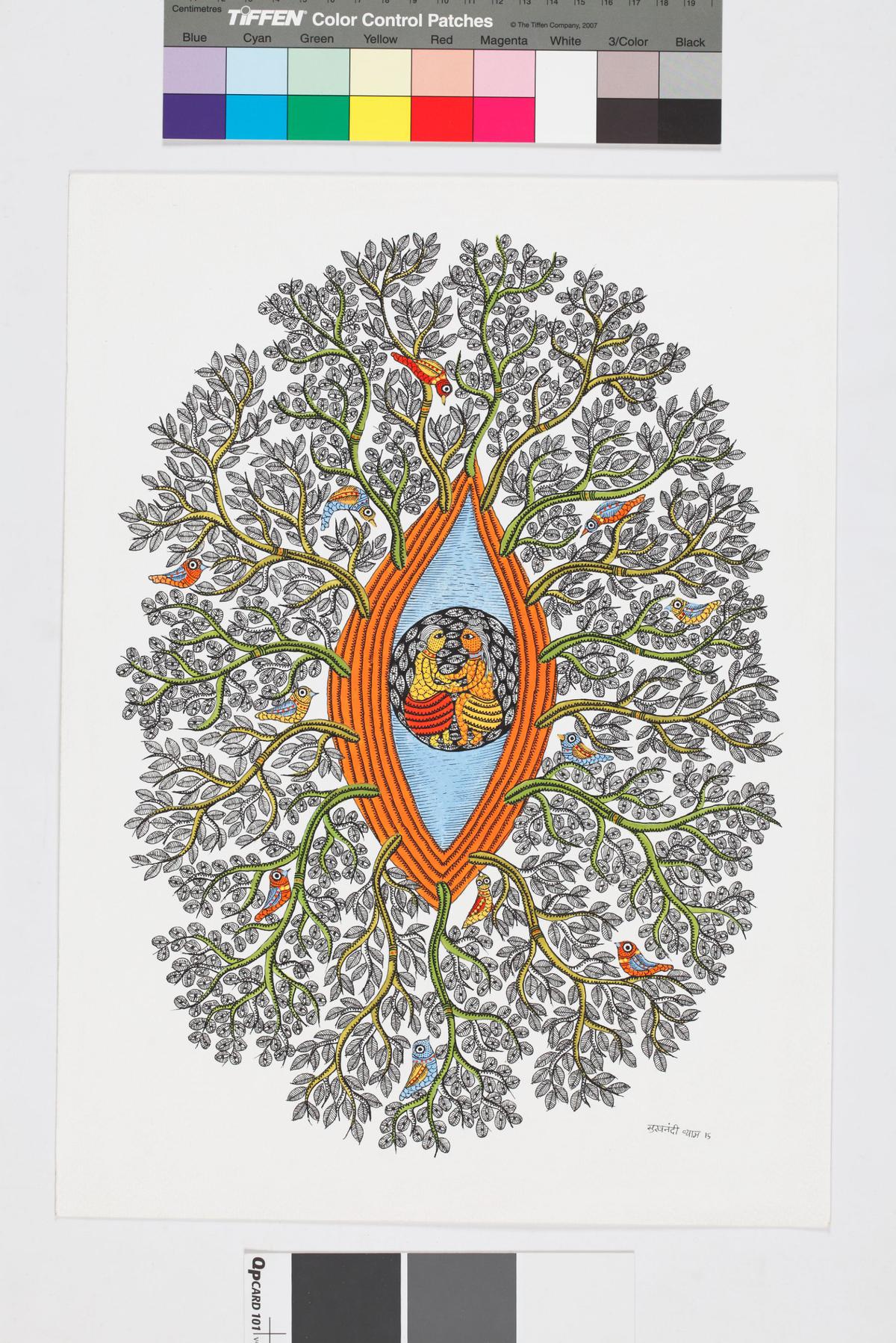In the ongoing exhibition of Echoes of the Land, artists use Gond art, Warli painting and Madhubani techniques to highlight issues of climate change.
In the ongoing exhibition of Echoes of the Land, artists use Gond art, Warli painting and Madhubani techniques to highlight issues of climate change.
We all know that climate change is real. Extreme weather events – extreme heat, rain, sea level rise – that the world has been witnessing to underscore the seriousness of the environmental crisis. In the face of such a massive threat, 24 artists have attempted to draw attention to the changing landscape. Titled ‘Echoes of the Land: Art Bears Witness to a Changing Planet’, the opening of the showcase on 3 November is a collaboration between the Saramaya Arts Foundation and Ojas Art Gallery.
Featuring works by contemporary and indigenous artists from different parts of the country, the event highlights our important and delicate relationship with the earth. It also comes at a time when experts are gearing up for COP27, the United Nations climate change conference to be held in Egypt on November 6.
“The earth is crying and we as societies and communities need to understand this. You can look at it from many perspectives and realize that excessive consumption has led to depletion of resources, which has led to a change in the landscape. The exhibition is based on spiritual, daily life and a conviction that we are fundamentally part of nature,” says Paul Abraham, who founded Sarmaya, a digital museum, in 2015.
Gond meets Warli
Baba Dev by Ram Singh Urvati | photo credit: special arrangement
The exhibition is divided into three parts. The first set shows the relationship between people and the planet; The second section refers to nostalgia and the current state of things; And the last section looks at the possibilities of reversing the damage and participating in the restoration. Artist Ram Singh Urvati’s Bada Deva (acrylic on canvas) belongs to the first volume in which he depicts Bada Deva, a revered deity for the Gond-dominated tribes. As he is believed to reside in the Saja tree, he is depicted in the center of it, with colorful round circles containing his creations such as crab, earthworm and spider.
Mayur and Tushar Vaude, a younger generation of Warli artists who grew up in Ganjad, a village in Warli, have created a composition titled ‘Kansari: Goddess of Seeds’. Seeds painted on naturally treated fabric against a backdrop of cow dung highlight the importance of preserving our seed diversity. “Having lived in the Warli community, we understand the culture that includes organic food and sustainability. We understand the value of this knowledge and that is how we have decided to build a bridge between our culture and knowledge and the outside world,” says Mayur.
A chain for Sabarmati
Other works include a stern piece depicting the Yamuna River by the late Zarina Hashmi; Gopa Trivedi’s art depicting nostalgia and hope; and Mayank Singh Shyam’s work draws parallels between human migration and birds. As far as Krishnanand Jha is concerned, he used the Madhubani Kachni style to portray slow, gentle and predictable pastoral life through vivid scenes from the village, while sixteen-year-old Sumit Chitra’s parents named Mata Ni Pachedi He was a practitioner of the arts. The show also features an artwork by Sumit depicting the Sabarmati river flowing in full force. “He recounts his childhood memories and imagines what his parents must have told him. The Sabarmati river was important to his art, and the cloth which was dyed with mordants, went into the river to get it colored. Had to be washed. Today, they have to go to special water tanks because the river has dried up,” says Paul.
The echo of the ground will be visible till November 20 at Ojas Art Gallery, 1AQ, near Qutub Minar, Mehrauli, New Delhi.

Eye of Mahadev by Sukhanandi Vyama. photo credit: special arrangement
On 12 November, Mayur will rehearse/perform ‘Khala’, a ritual performed for Kansari, the goddess of seeds, in the Warli community at the Futures Gallery. Khala is a ritual performed before the harvest season where families and communities gather at a special place in their farm to pay homage to spirits and gods and goddesses. “It is a gathering of gods where we feed them and then feast. This is a special place in our area where we worship our protector,” explains Mayur. Panel discussions, interactions and meetings with school children are also planned during the show.